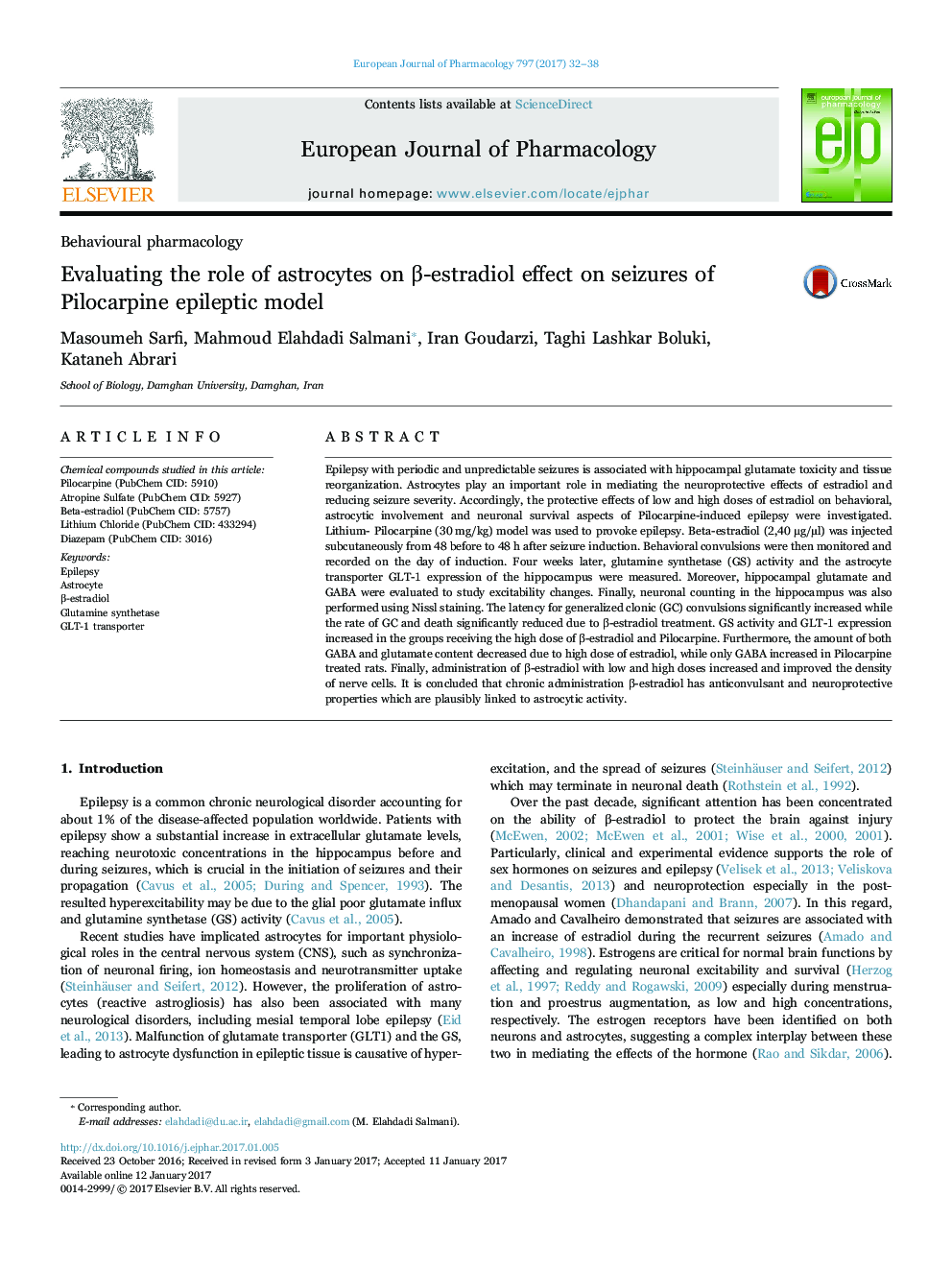| Article ID | Journal | Published Year | Pages | File Type |
|---|---|---|---|---|
| 5554828 | European Journal of Pharmacology | 2017 | 7 Pages |
Epilepsy with periodic and unpredictable seizures is associated with hippocampal glutamate toxicity and tissue reorganization. Astrocytes play an important role in mediating the neuroprotective effects of estradiol and reducing seizure severity. Accordingly, the protective effects of low and high doses of estradiol on behavioral, astrocytic involvement and neuronal survival aspects of Pilocarpine-induced epilepsy were investigated. Lithium- Pilocarpine (30 mg/kg) model was used to provoke epilepsy. Îeta-estradiol (2,40 μg/µl) was injected subcutaneously from 48 before to 48 h after seizure induction. Behavioral convulsions were then monitored and recorded on the day of induction. Four weeks later, glutamine synthetase (GS) activity and the astrocyte transporter GLT-1 expression of the hippocampus were measured. Moreover, hippocampal glutamate and GABA were evaluated to study excitability changes. Finally, neuronal counting in the hippocampus was also performed using Nissl staining. The latency for generalized clonic (GC) convulsions significantly increased while the rate of GC and death significantly reduced due to β-estradiol treatment. GS activity and GLT-1 expression increased in the groups receiving the high dose of β-estradiol and Pilocarpine. Furthermore, the amount of both GABA and glutamate content decreased due to high dose of estradiol, while only GABA increased in Pilocarpine treated rats. Finally, administration of β-estradiol with low and high doses increased and improved the density of nerve cells. It is concluded that chronic administration β-estradiol has anticonvulsant and neuroprotective properties which are plausibly linked to astrocytic activity.
Graphical abstractDownload high-res image (170KB)Download full-size image
